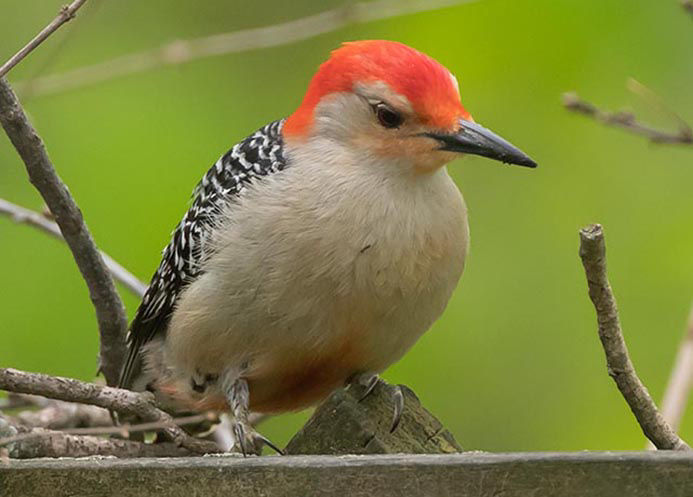Woodpeckers in Florida: Identification Tips and Habitat Preferences
Woodpeckers Unleashed: Exploring the Marvels of These Competent Tree Climbers
Woodpeckers, with their distinct markings and balanced drumming resembling through wooded areas, hold an one-of-a-kind area in the bird globe. Their specialized composition and adaptations enable them to navigate upright surface areas with unmatched skill. Their proficiency of tree climbing is simply one aspect of their fascinating habits. As we look into the complex information of woodpeckers' nesting practices, feeding methods, and the ongoing preservation efforts to protect these remarkable birds, a deeper appreciation for their area in nature unfolds.
Makeup and Adaptations
When analyzing the makeup and adjustments of woodpeckers, one can observe exceptional functions that allow these birds to prosper in their specialized eco-friendly niche. In addition, woodpeckers have zygodactyl feet, with two toes dealing with ahead and 2 encountering backward, providing a firm grasp on tree trunks while they browse for food or drum for interaction.
Additionally, woodpeckers have an one-of-a-kind tongue structure that is long, barbed, and sticky, allowing them to extract bugs from gaps in timber. This specific adjustment enables woodpeckers to exploit a food resource that is hard to reach to lots of other bird varieties. Overall, the makeup and adjustments of woodpeckers showcase the impressive transformative services that have enabled these birds to thrive in their arboreal habitat.
Drumming Actions
Having explored the makeup and adaptations of woodpeckers, the focus currently moves to comprehending their drumming behavior, a distinctive facet of their communication and territorial display screens. Drumming is a crucial type of interaction among woodpeckers, serving numerous functions such as establishing areas, attracting friends, and signaling alarm system. Each woodpecker species has a distinct drumming pattern that helps individuals identify participants of their own types and distinguish them from competitors or predators.
Woodpeckers generate drumming noises by quickly pecking on resonant surfaces such as dead trees, utility posts, or perhaps metal things, creating a collection of rhythmic beats. The intensity and rate of drumming can vary based on the purpose; as an example, a rapid drumming sequence might signify hostility towards burglars, while a slower and softer drumming pattern can suggest courtship (Woodpeckers in Florida). Furthermore, woodpeckers might change the frequency and period of their drumming to convey particular messages successfully
Nesting Routines
Checking out the nesting practices of woodpeckers discloses fascinating understandings right into their reproductive actions and habitat choices. Woodpeckers are recognized for their special click to read more nesting choices, commonly excavating dental caries in trees to create protected spaces for raising their young. These cavities serve not just as a nesting website however also as a safe and secure sanctuary from predators and stormy climate.
Woodpeckers display a high degree of fidelity to their nesting sites, usually going back to the same place time after time. This habits highlights the significance of suitable habitat availability for their reproductive success. The option of a nesting website is essential for woodpeckers, with factors such as tree varieties, height, and decay stage playing considerable functions in their decision-making procedure.
Surprisingly, some woodpecker types are known to excavate numerous cavities within their area, offering themselves with alternate nesting choices. This technique might act as a form of insurance against possible dangers or disruptions to their primary nesting site.

Feeding Methods
One of the most unique feeding behaviors of woodpeckers is drumming, which includes rapid pecking on trees to discover pests underneath the bark. Woodpeckers are additionally recognized to dig deep into dental caries in trees to gain access to concealed insect larvae or sap. Some species, like the acorn woodpecker, shop nuts in specially created holes called granaries.
Conservation Initiatives
In the middle of the intricate feeding methods displayed by woodpeckers, the preservation efforts aimed at securing these interesting birds play an essential function in protecting their habitats and populaces. Woodpeckers encounter various hazards to their survival, consisting of environment loss due to deforestation, environment modification altering their communities, and crashes with manufactured structures such as structures and automobiles - Woodpeckers in Florida. Resources Guardians are actively working to attend to these obstacles and ensure the lasting wellness of woodpecker species

Education and learning and public awareness campaigns are likewise important parts of woodpecker conservation initiatives. By raising awareness concerning the significance directory of these birds in maintaining healthy woodland ecological communities, guardians can garner support for habitat preservation campaigns and advertise responsible land monitoring methods. With joint initiatives in between scientists, policymakers, and local areas, we can interact to safeguard a future where woodpeckers grow in their natural habitats.
Verdict
